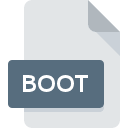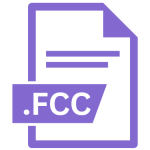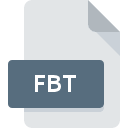.BOOT File Extension

InstallShield Boot File
| Developer | Flexera Software |
| Popularity | |
| Category | Settings Files |
| Format | .BOOT |
| Cross Platform | Update Soon |
What is an BOOT file?
The .BOOT file extension is associated with InstallShield, a software tool for creating installers and software distribution packages. Specifically, .BOOT files are used for bootable media in InstallShield. They contain information needed to create bootable disks or drives that can be used to install or run software on a computer.
More Information.
The .BOOT file format was introduced to facilitate the creation of bootable installation media for software packages. This format helps in setting up systems, especially in environments where software installation needs to occur from a bootable medium, such as CDs, DVDs, or USB drives. Its initial purpose was to streamline and simplify the process of creating bootable installation media for software deployment.
Origin Of This File.
InstallShield is a software tool developed by Flexera Software (formerly Acresso Software). It is widely used in the software industry to create installation packages for software applications. The .BOOT file extension is specific to the InstallShield environment, used for generating bootable installations or recovery media.
File Structure Technical Specification.
- File Structure: The structure of
.BOOTfiles is not publicly documented in detail. Generally, these files contain boot configuration information, scripts, and data necessary to set up a bootable environment. - Technical Specification: The
.BOOTfile works in conjunction with other InstallShield files and settings. It typically includes boot loader instructions, file system information, and possibly compressed files for the installation process.
How to Convert the File?
Windows
- Convert Using InstallShield: The most reliable way to work with
.BOOTfiles is through InstallShield itself. Use InstallShield to open and manage the.BOOTfile. If you need to convert the.BOOTfile into a different format (e.g., creating a bootable disk), you can use InstallShield’s built-in tools or wizards to accomplish this. - Creating Bootable Media: You can use InstallShield to package the contents of the
.BOOTfile into a bootable ISO or other installation media formats.
Linux
- Use Wine: Install Wine, a compatibility layer for running Windows applications on Linux. You can then install and run InstallShield through Wine to manage
.BOOTfiles. This method is less straightforward and may have compatibility issues. - Virtual Machine: Set up a Windows virtual machine (VM) using software like VirtualBox or VMware. Install InstallShield within the VM to handle
.BOOTfiles and perform any necessary conversions or operations.
macOS
- Use Wine or CrossOver: Similar to Linux, you can use Wine or CrossOver (a commercial version of Wine) to run InstallShield on macOS. This will allow you to work with
.BOOTfiles. - Boot Camp or Virtual Machine: Install Windows on a Mac using Boot Camp or a VM software like Parallels or VMware Fusion. Install InstallShield in the Windows environment to work with the
.BOOTfiles.
Android
- No Native Support: Android does not support
.BOOTfiles or InstallShield directly. There is no available application or method to convert or handle these files on Android devices. - Workaround: Use a cloud-based service or file conversion service on a computer to handle the
.BOOTfiles and then access the converted files from your Android device if needed.
iOS
- No Native Support: iOS also does not support
.BOOTfiles. There are no applications available on iOS for working with these files. - Workaround: Similar to Android, use a computer to handle and convert
.BOOTfiles. You can then access any converted files through iOS-compatible apps or cloud storage.
Others
- General Tools: For environments not specifically mentioned, handling
.BOOTfiles typically requires specialized tools like InstallShield. You may need to:- Use Cross-Platform Tools: Investigate whether cross-platform tools or virtual machines can run Windows applications.
- Seek Conversion Services: Look for online or third-party services that might offer conversion capabilities for proprietary formats.
Advantages And Disadvantages.
Advantages:
- Streamlined Installation: Facilitates the creation of bootable installation media, making software deployment more efficient.
- Compatibility: Designed to work seamlessly with InstallShield, which is widely used for software packaging.
Disadvantages:
- Proprietary Format: Limited documentation and proprietary nature can make it difficult to work with outside of InstallShield.
- Lack of Support: Specific tools or utilities to work with
.BOOTfiles outside the InstallShield environment may be limited.
How to Open BOOT?
Open In Windows
The .BOOT file is designed to be used with InstallShield. Open InstallShield and load the project containing the .BOOT file.
Open In Linux
There is no native support for .BOOT files in Linux. You may need to use a Windows virtual machine or a compatibility layer like Wine to run InstallShield.
Open In MAC
Similar to Linux, macOS does not natively support .BOOT files. Use a Windows virtual machine or Boot Camp to access InstallShield.
Open In Android
Android does not support .BOOT files directly. There are no tools available for working with these files on Android devices.
Open In IOS
iOS does not support .BOOT files. There are no available tools to handle these files on iOS devices.
Open in Others
.BOOT files are highly specific to InstallShield and bootable media creation. They are not widely supported outside of their intended environment. Specialized tools or environments may be necessary to work with or convert these files.












